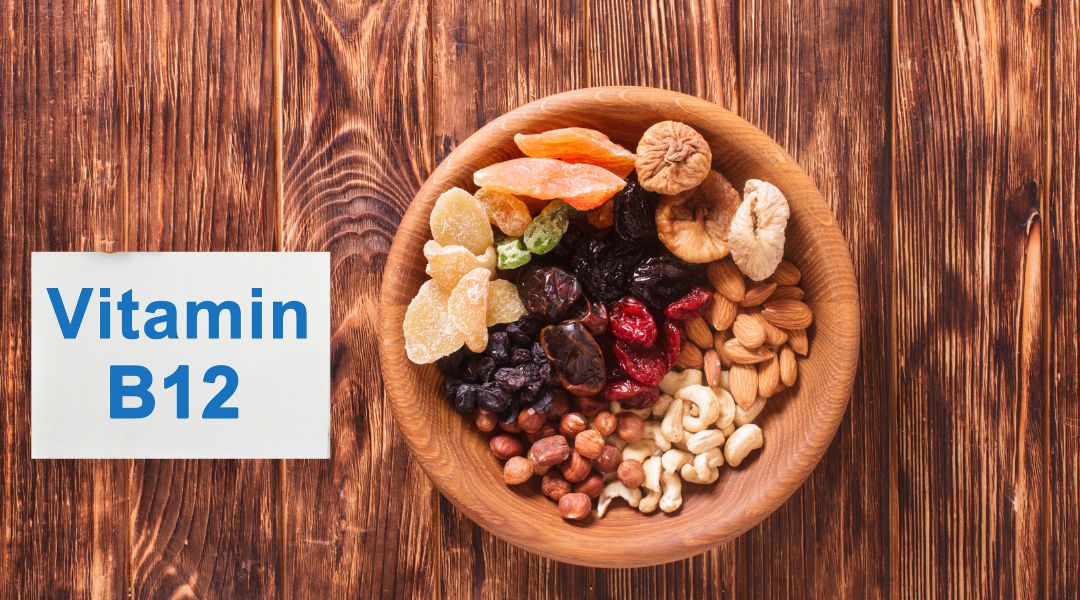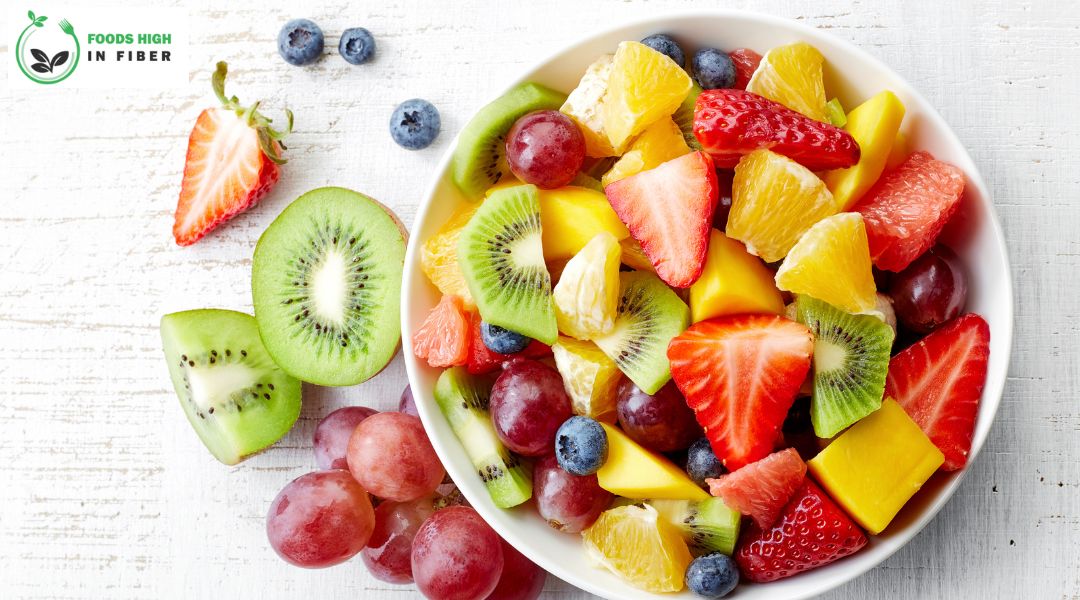Definition of red fruit
Red fruits are an order of fruits that parade a vibrant red color when completely ripe. These fruits are generally characterized by their distinct red saturation, which is caused by the presence of colors similar to lycopene and anthocyanins. Red fruits can vary in size, shape, and taste, but they partake in a common characteristic of being visually striking and charming.
Importance and popularity of red fruit:
Red fruits hold significant importance in the realm of nutrition and health. They are widely recognized for their exceptional nutritional benefits and have gained popularity among individuals striving for a balanced and healthy diet. Red fruits are known for being rich sources of essential vitamins, minerals, dietary fiber, and antioxidants. They are considered key components of a nutritious and well rounded diet, contributing to overall well-being and supporting various bodily functions. Additionally, red fruits have gained culinary prominence due to their vibrant color, unique flavors, and versatility in various recipes and dishes. Their popularity extends beyond their nutritional value, with many people enjoying their taste, juiciness, and refreshing qualities. The visually appealing nature of red fruits also makes them aesthetically pleasing and enticing choices for consumption and culinary purposes.
Nutritional Benefits of Red Fruits

These are the following nutritional benefits of red fruit:
A. Rich in Vitamins and Minerals
- Red fruits, such as strawberries, cherries, and watermelons, are packed with various vitamins and minerals that contribute to overall health and well being.
- They are excellent sources of vitamin C, which helps boost the immune system, promote collagen production, and support wound healing.
- Red fruits also contain vitamin A, which is essential for healthy vision, immune function, and cell growth.
- Additionally, they provide important minerals like potassium, which helps maintain proper heart function and blood pressure regulation, and manganese, which supports bone health and metabolism
B. High in Antioxidants
- Red fruits are renowned for their high antioxidant content, which helps protect the body against harmful free radicals.
- Antioxidants neutralize free radicals, reducing oxidative stress and risk of chronic diseases, including heart disease, cancer, and age-related conditions.
- Some red fruits, like strawberries and raspberries, are particularly rich in antioxidants called anthocyanins, which give them their vibrant red color and provide powerful health benefits.
- Anthocyanins have anti-inflammatory properties and have been associated with improved cardiovascular health and cognitive function.
C. Good Source of Dietary Fiber
- Red fruits are generally high in dietary fiber, which plays a crucial role in digestive health and overall well being.
- Fiber adds bulk to diet, promoting regular bowel movements and preventing constipation.
- Red fruit also helps control blood sugar levels by slowing down the absorption of sugars and carbohydrates.
- Moreover, consuming an adequate amount of dietary fiber has been linked to a reduced risk of heart disease, obesity, and certain types of cancer.
- Red fruits like apples and raspberries are particularly rich in soluble fiber, which helps lower cholesterol levels and maintain healthy blood pressure.
Incorporating red fruits into your diet can provide you with a wide range of essential vitamins, minerals, antioxidants, and dietary fiber, contributing to your overall health and wellness.
Common Types of Red Fruit
I. Apples

Apples are a popular and extensively consumed fruit known for their crisp texture and sweet courtesan flavor. They come in colorful colors, including tones of red. When it comes to red apples, there are several noteworthy kinds:
Varieties of red apples
A. Red Delicious: This classic apple variety is known for its deep red color, shiny skin, and elongated shape. It has a mildly sweet taste and a firm texture, making it suitable for both fresh consumption and cooking.
B. Fuji: Originally from Japan, Fuji apples have a bright red skin with yellow-green undertones. They are known for their exceptional sweetness, crunchy texture, and long shelf life. Fuji apples are often enjoyed raw, but they can also be used in baking and cooking.
C. Gala: Gala apples have a yellowish-red skin with distinctive orange stripes. They offer a crisp and juicy bite with a mildly sweet flavor. Gala apples are popular for eating fresh and are often used in salads or for making applesauce.
D. Honeycrisp: Honeycrisp apples have a vibrant red color with yellow undertones. They are known for their crisp and juicy texture, balanced sweetness, and subtle tartness. Honeycrisp apples are great for eating fresh and make a delicious addition to pies and baked goods.
Health benefits of apples
Apples are not only delicious but also packed with various health benefits. Some of key advantages include:
A. Rich in fiber: Apples are a good source of dietary fiber, both soluble and insoluble. Fiber promotes healthy digestion, aids in maintaining a healthy weight, and may reduce risk of certain diseases, including heart disease and type 2 diabetes.
B. High in antioxidants: Apples contain antioxidants, including flavonoids and polyphenols, which help combat oxidative stress and reduce inflammation in the body. These antioxidants have been associated with a lower risk of chronic conditions, such as heart disease and certain types of cancer.
C. Vitamins and minerals: Apples provide essential vitamins and minerals, including vitamin C, vitamin A, potassium, and a small amount of iron. Vitamin C supports immune system, while potassium promotes heart health and helps maintain proper fluid balance in the body.
D. Hydration: Apples have high water content, which aids in hydration and contributes to overall well being.
II. Strawberries

These are the following nutritional & recipes of strawberries:
Nutritional Value of Strawberries:
- Strawberries are packed with essential nutrients and offer several health benefits.
- They are low in calories and fat, making them a nutritious choice for weight management.
- Strawberries are an excellent source of vitamin C, which supports immune function, collagen production, and acts as an antioxidant.
- They also contain dietary fiber, which aids in digestion and promotes feelings of fullness.
- Strawberries provide potassium, which helps maintain healthy blood pressure levels.
- They are rich in antioxidants, such as anthocyanins, which have anti-inflammatory properties and contribute to heart health.
Culinary Uses and Recipes with Strawberries:
- Strawberries are a versatile fruit that can be enjoyed in various ways.
- Fresh strawberries can be eaten on their own as a healthy snack or added to fruit salads for a burst of flavor.
- They are commonly used in desserts like strawberry shortcake, pies, tarts, and ice cream sundaes.
- Strawberries can be blended into smoothies or used as a topping for yogurt and oatmeal.
- They can be incorporated into baked goods, such as muffins, cakes, and pancakes, adding sweetness and color.
- Strawberry preserves and jams are popular spreads for toast, pastries, and sandwiches.
- Strawberries can also be used in savory dishes, like salads or salsas, to add a touch of sweetness and acidity.
Strawberry Recipes:
A. Strawberry Spinach Salad:
- Combine fresh spinach, sliced strawberries, crumbled feta cheese, and chopped walnuts.
- Toss with a balsamic vinaigrette dressing for a refreshing and nutritious salad.
B. Strawberry Smoothie:
- Blend fresh or frozen strawberries with Greek yogurt, a banana, and a splash of milk or juice.
- Optionally, add honey or a sweetener of your choice for added sweetness.
C. Strawberry Overnight Oats:
- Mix rolled oats, chia seeds, milk (dairy or plant-based), and a handful of sliced strawberries in a jar.
- Refrigerate overnight and enjoy a delicious and nutritious breakfast in the morning.
D. Grilled Chicken and Strawberry Salsa:
- Grill chicken breasts and serve with a homemade salsa made of diced strawberries, red onion, cilantro, lime juice, and a touch of jalapeno for heat.
- This savory sweet combination is a delightful way to enjoy strawberries in a savory dish.
III. Cherries

Cherries are delicious and vibrant red fruits that are enjoyed around the world for their sweet and tart flavors. In this section, we will explore different varieties of cherries and discuss their numerous health benefits.
Varieties of Cherries
Cherries come in various types, each with its own unique characteristics and flavor profiles. Some common varieties include:
- Sweet Cherries: These cherries are most popular and widely consumed. They have a firm, juicy flesh and a sweet taste. Some popular sweet cherry varieties include Bing, Rainier, and Lambert.
- Tart Cherries: Tart cherries, also known as sour cherries, have a tangy flavor that is less sweet compared to sweet cherries. They are often used in cooking and baking. Montmorency and Morello are two well-known tart cherry varieties.
Health Benefits of Cherries
Cherries are not only delicious but also offer several health benefits due to their rich nutrient content. Here are some of key health benefits associated with cherries:
- Anti-inflammatory properties: Cherries contain compounds called anthocyanins, which have powerful anti-inflammatory properties. These compounds may help reduce inflammation in the body, potentially alleviating symptoms of conditions like arthritis and gout.
- Antioxidant-rich: Cherries are packed with antioxidants that help protect the body against oxidative stress caused by harmful free radicals. These antioxidants, including vitamin C and various phytochemicals, may contribute to overall health and well being.
- Pain relief: Some studies suggest that cherries, particularly tart cherries, may have natural pain-relieving properties. They have been associated with reduced muscle soreness, improved recovery after exercise, and relief from conditions like osteoarthritis.
- Sleep support: Cherries are a natural source of melatonin, a hormone that regulates sleep-wake cycles. Consuming cherries or tart cherry juice may help improve sleep quality and duration, making it beneficial for individuals experiencing sleep disturbances.
- Heart health: The antioxidants and anti-inflammatory compounds in cherries may contribute to cardiovascular health. Research suggests that cherries may help lower blood pressure, reduce cholesterol levels, and decrease risk of heart disease.
- Nutrient content: Cherries are low in calories and rich in essential nutrients. They provide vitamins A and C, potassium, fiber, and other beneficial compounds that support overall health and immune function.
IV. Raspberries

These are the following nutritional & health benefits of raspberries:
Nutritional profile of raspberries:
- Raspberries are low in calories and high in essential nutrients.
- They are a rich source of dietary fiber, providing around 8 grams per cup, aiding in digestion and promoting satiety.
- Raspberries are packed with antioxidants, including anthocyanins, which give them their vibrant red color and have been linked to numerous health benefits.
- They are a good source of vitamins C and K, providing around 50% and 40% of the daily recommended intake, respectively.
- Raspberries also contain minerals such as manganese, which is important for bone health, and potassium, which supports heart health.
Culinary uses and health benefits:
- They are often eaten fresh as a snack or used as a topping for desserts, cereals, yogurt, and salads.
- Raspberries are commonly used in baking, such as in pies, tarts, muffins, and cakes.
- They can also be blended into smoothies, incorporated into sauces, or made into preserves and jams.
Health Benefits:
- Antioxidant properties: Raspberries are loaded with antioxidants that help fight free radicals in the body, reducing oxidative stress and inflammation.
- Heart health: The high levels of dietary fiber, potassium, and antioxidants in raspberries contribute to a healthy heart. They help regulate blood pressure, reduce cholesterol levels, and support overall cardiovascular health.
- Blood sugar control: The fiber content in raspberries slows down release of sugar into the bloodstream, preventing spikes in blood sugar levels. This makes them a suitable fruit option for individuals with diabetes or those aiming to manage their blood sugar levels.
- Digestive health: The fiber in raspberries promotes regular bowel movements, prevents constipation, and supports a healthy digestive system.
- Weight management: Raspberries are low in calories and high in fiber, which can help promote feelings of fullness and aid in weight management.
- Eye health: Raspberries contain antioxidants like vitamin C and zeaxanthin that protect against age-related macular degeneration and promote good vision.
V. Watermelons

These are the following nutritional & properties of watermelon:
Nutritional value of watermelons:
- Water content: Watermelons are composed of approximately 92% water, making them an excellent choice for hydration.
- Vitamins: They are a good source of vitamin C, which is essential for immune function, collagen production, and wound healing. They also contain some amounts of vitamins A, B6, and potassium.
- Antioxidants: Watermelons are rich in lycopene, a powerful antioxidant that may help reduce the risk of certain cancers and promote heart health.
- Low in calories and fat: Watermelons are low in calories and virtually fat free, making them a guilt-free option for those watching their weight.
- Fiber: Although watermelons are not particularly high in fiber, they do provide some dietary fiber, which aids digestion and promotes a feeling of fullness.
Refreshing and hydrating properties:
- High water content: As mentioned earlier, watermelons consist of about 92% water, making them an excellent natural source of hydration.
- Electrolytes: Watermelons contain essential electrolytes like potassium and magnesium, which are important for maintaining proper fluid balance in body.
- Cooling effect: Watermelons have a naturally sweet and refreshing taste, and their high water content helps cool and refresh the body, especially during hot summer months.
- Replenishing electrolytes: Watermelon juice is sometimes used as a natural alternative to sports drinks because it can help replenish electrolytes lost through sweating during exercise.
- Quenches thirst: Due to its high water content and natural sweetness, watermelons can effectively quench thirst and provide a satisfying alternative to sugary beverages.
VI. Pomegranates

These are the following nutritional & health benefits of pomegranates
Nutritional Components of Pomegranates
Pomegranates are not only delicious but also packed with various essential nutrients. Here are some key nutritional components found in pomegranates:
- Antioxidants: Pomegranates are rich in antioxidants, such as polyphenols, flavonoids, and tannins. These antioxidants help protect the body against oxidative stress and fight free radicals, which can contribute to chronic diseases.
- Vitamins and Minerals: Pomegranates are a good source of vitamins and minerals, including vitamin C, vitamin K, potassium, and folate. Vitamin C is essential for immune function and collagen synthesis, while vitamin K is important for blood clotting. Potassium helps maintain proper fluid balance and heart health, while folate is crucial for cell growth and development.
- Fiber: Pomegranates are high in dietary fiber, with both soluble and insoluble forms. Fiber aids in digestion, promotes satiety, and helps regulate blood sugar levels. It also supports a healthy gut by nourishing beneficial gut bacteria.
- Phytochemicals: Pomegranates contain unique phytochemicals, such as punicalagins, which are responsible for many of their health benefits. Punicalagins have potent antioxidant and anti-inflammatory properties, contributing to the fruit’s protective effects.
Traditional Uses and Health Benefits
Pomegranates have a long history of traditional uses across various cultures, and modern research has revealed several potential health benefits associated with consuming pomegranates:
- Heart Health: Pomegranates may have protective effects on heart health. The antioxidants in pomegranates help reduce oxidative stress and inflammation, both of which are risk factors for cardiovascular diseases. Studies suggest that regular consumption of pomegranate juice or extract may improve cholesterol levels, lower blood pressure, and enhance overall heart function.
- Anti-Cancer Properties: Some studies indicate that pomegranates possess anti-cancer properties. The antioxidants in pomegranates help combat free radicals and inhibit growth and spread of cancer cells. Research suggests that pomegranate extract may be beneficial in preventing or treating certain types of cancer, including breast and prostate cancer.
- Anti-Inflammatory Effects: Pomegranates exhibit strong anti-inflammatory properties. The fruit’s phytochemicals can help reduce inflammation in body, which is linked to chronic diseases such as arthritis, diabetes, and certain cancers.
- Skin Health: Pomegranates are often used in skincare products due to their potential benefits for skin. The antioxidants in pomegranates help protect against skin damage caused by UV rays and environmental pollutants. They may also promote collagen production, improving skin elasticity and reducing appearance of wrinkles.
- Digestive Health: The high fiber content in pomegranates supports healthy digestion and may prevent constipation. Additionally, pomegranates have been used traditionally to treat digestive disorders like diarrhea and dysentery.
- Immune Boost: Pomegranates are a good source of vitamin C, which plays a vital role in supporting immune function. Adequate vitamin C intake can help strengthen the immune system and protect against common illnesses.
VII. Cranberries

Cranberries are a vibrant red fruit known for their tart flavor. They are widely consumed and appreciated for their numerous nutritional properties and health benefits.
Nutritional Properties of Cranberries
Cranberries are low in calories and high in essential nutrients. Here are some of their key nutritional properties:
- Vitamins: Cranberries are rich in vitamin C, providing approximately 22% of the recommended daily intake in a single cup. They also contain small amounts of vitamins A, E, and K.
- Minerals: Cranberries are a good source of minerals such as manganese, copper, and potassium. These minerals play important roles in various bodily functions, including maintaining healthy bones and supporting immune system.
- Fiber: Cranberries are packed with dietary fiber, with one cup containing around 4 grams. Fiber aids in digestion, promotes satiety, and helps regulate blood sugar levels.
- Antioxidants: Cranberries are abundant in antioxidants, particularly flavonoids and phenolic compounds. These antioxidants help protect the body against damage from harmful free radicals and may contribute to overall health.
Health Benefits of Cranberries
Consuming cranberries regularly has been associated with several health benefits, including:
A. Urinary Tract Health: Cranberries are renowned for their role in promoting urinary tract health. They contain compounds called proanthocyanidins that help prevent certain types of bacteria, such as Escherichia coli, from adhering to urinary tract walls. This property may reduce risk of urinary tract infections.
B. Heart Health: The antioxidants present in cranberries have been linked to improved heart health. They may help reduce inflammation, lower blood pressure, and improve cholesterol levels, thereby reducing risk of cardiovascular diseases.
C. Anticancer Properties: Some studies suggest that cranberries may have anticancer properties. The antioxidants and phytochemicals found in cranberries have been associated with inhibiting growth of certain cancer cells and reducing risk of developing various types of cancer, including breast, colon, and prostate cancers.
D. Digestive Health: The high fiber content in cranberries promotes healthy digestion by supporting regular bowel movements and preventing constipation. Additionally, antioxidants in cranberries may have anti-inflammatory effects that could benefit conditions like inflammatory bowel disease.
E. Oral Health: Cranberries may contribute to oral health by inhibiting growth of bacteria associated with dental plaque and gum disease. Drinking cranberry juice or consuming cranberry extracts may help reduce risk of cavities and gum inflammation.
Conclusion
In conclusion, red fruit offer a wide range of benefits that make them a valuable addition to any diet. Throughout this discussion, we explored the nutritional advantages of red fruits, highlighting their richness in vitamins, minerals, antioxidants, and dietary fiber. These components contribute to overall health and well being.
The power of red fruit and make them a regular part of our diet. Whether we bite into a juicy apple, savor sweetness of strawberries, or relish bursts of flavor from a handful of raspberries, red fruits offer a nutritious and enjoyable way to enhance our well being. So, let’s celebrate the abundance and variety of red fruit and reap rewards they have to offer.







